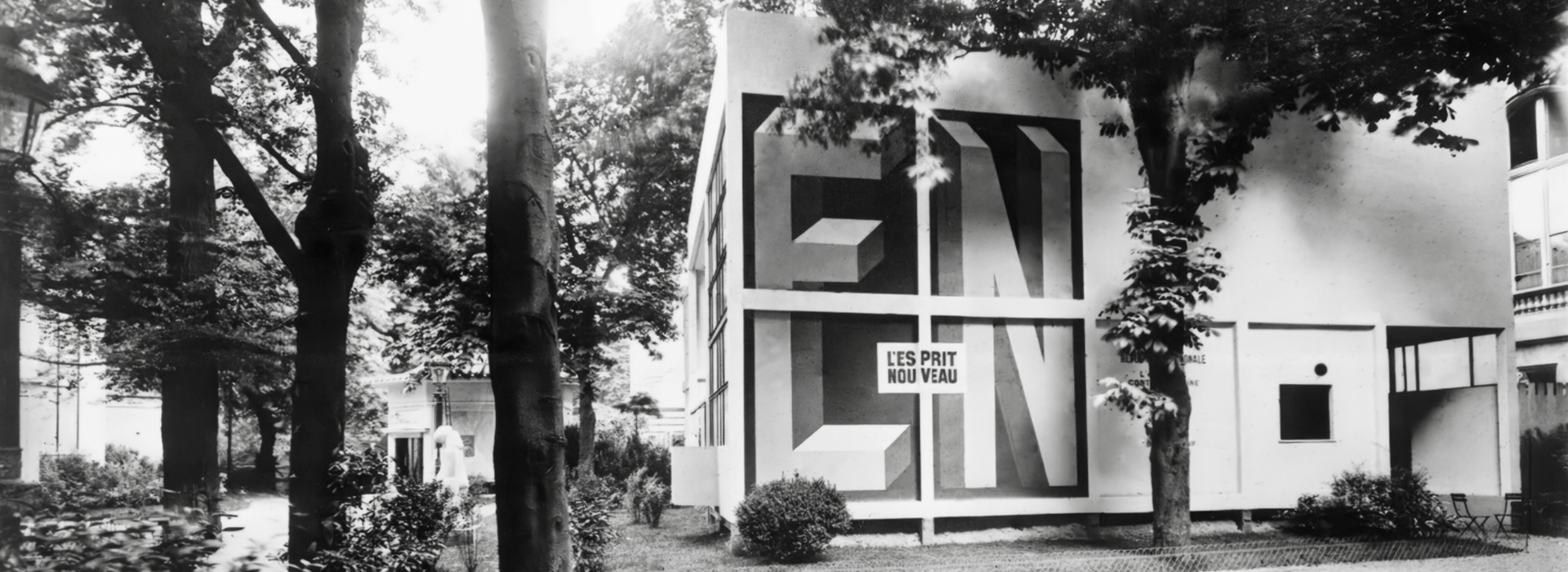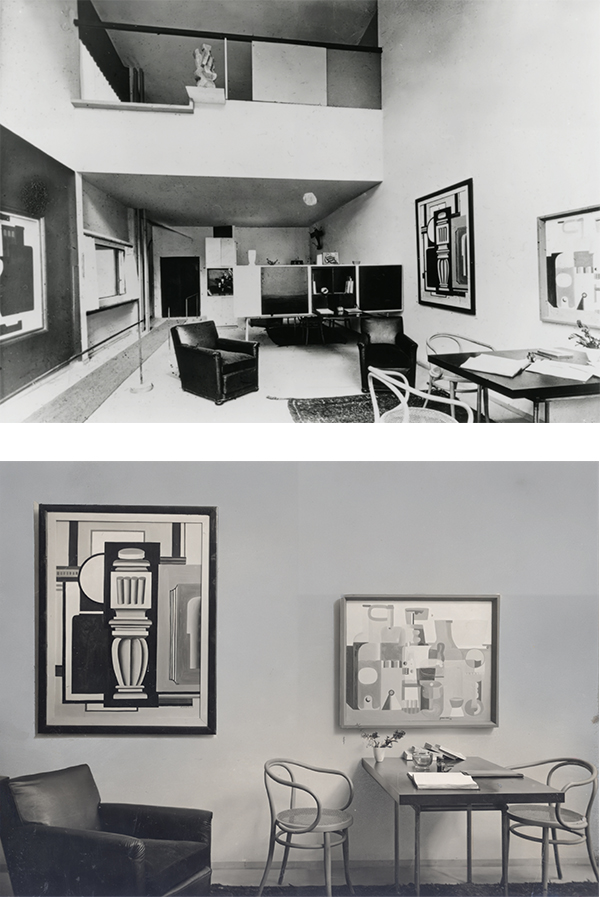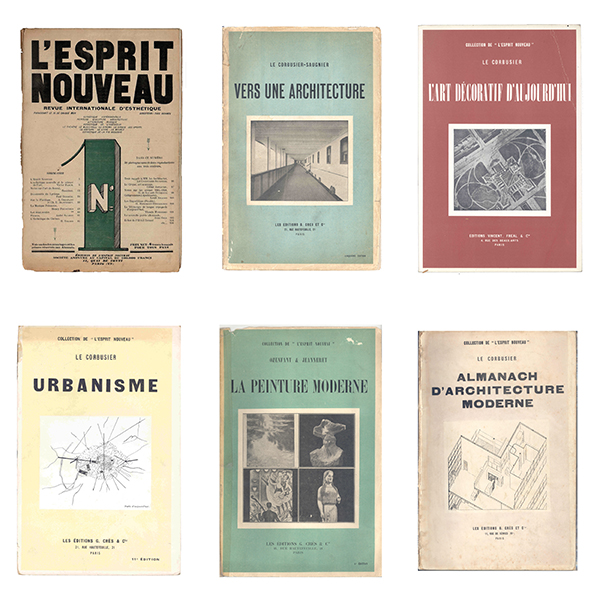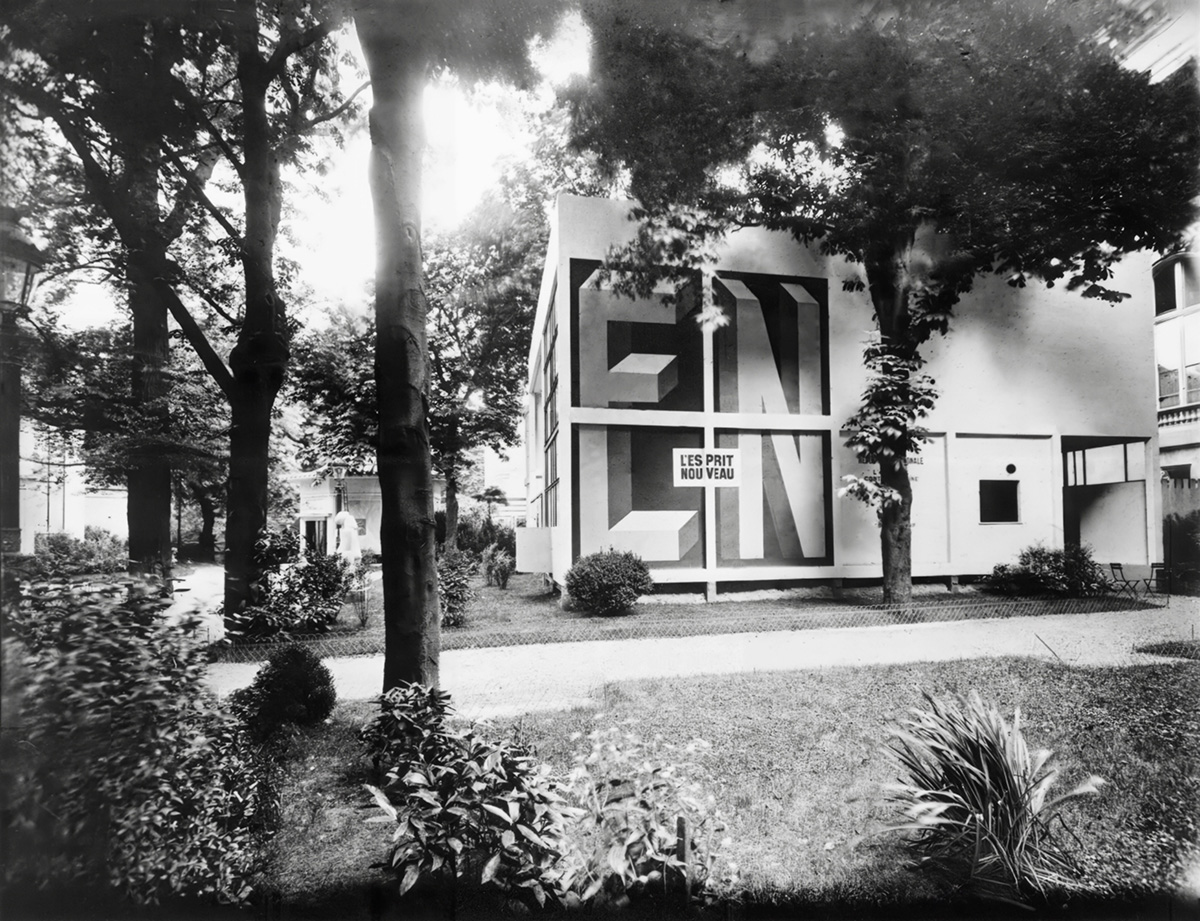
1924-1926 Almanach d'un Esprit Nouveau
The pavilion by Le Corbusier and Pierre Jeanneret at the International Exhibition of Modern Decorative and Industrial Arts in Paris
The Fondation Le Corbusier presents, at the Maison La Roche, the exhibition 1924-1926 Almanach d’un Esprit Nouveau — Le pavillon de Le Corbusier et Pierre Jeanneret à l’Exposition internationale des arts décoratifs et industriels modernes à Paris.
This year 2025 marks the centenary of the International Exhibition of Modern Decorative and Industrial Arts, which celebrated the triumph of a modernity known as “Art Deco” since the 1960s in Paris. As in 1925, the purist pavilion of the magazine L’Esprit Nouveau, designed by Le Corbusier and Pierre Jeanneret (1924-1925), appears little or as a singular, marginalised, even incongruous object, whereas it was the only one within this event to engage in a profound reflection on the organisation of contemporary society, a true political project according to the noble original meaning of the term.
As part of an architectural tour of the Maison La Roche, the exhibition 1924-1926 Almanach d’un Esprit Nouveau (1924-1926 Almanac of a New Spirit) bears witness, in several stages, to the intellectual and artistic ambition of this major milestone in modern architecture.
Through original drawings, photographs, publications, archives, furniture, objects and paintings, mainly from the Fondation Le Corbusier, the exhibition offers a rediscovery of this little-known key achievement in Le Corbusier’s work, its ambition, its importance in the history of the 20th-century avant-garde, its dissemination and its legacy.


Genèse d'un esprit nouveau
For some fifteen years, Le Corbusier laid the foundations for a new artistic and intellectual project which, in his own words, touched on all “forms of human activity”.
In the first half of the 1920s, this project found a platform in the journal L’Esprit Nouveau (1920-1925), founded with the painter Amédée Ozenfant and the poet Paul Dermée, from which he drew four works conceived as methodological and theoretical stages in this re-founding: Vers une architecture (1923), L’Art Décoratif d’Aujourd’hui (1925), Urbanisme (1925), and La Peinture moderne (1925).
Finally, in 1926, when the journal no longer existed, he published Almanach d’architecture moderne, which he presented as the “golden book” of his pavilion and which is its true retroactive manifesto.
For some fifteen years, Le Corbusier laid the foundations for a new artistic and intellectual project which, in his own words, touched on all “forms of human activity”.
In the first half of the 1920s, this project found a platform in the journal L’Esprit Nouveau (1920-1925), founded with the painter Amédée Ozenfant and the poet Paul Dermée, from which he drew four works conceived as methodological and theoretical stages in this re-founding: Vers une architecture (1923), L’Art Décoratif d’Aujourd’hui (1925), Urbanisme (1925), and La Peinture moderne (1925).
Finally, in 1926, when the journal no longer existed, he published Almanach d’architecture moderne, which he presented as the “golden book” of his pavilion and which is its true retroactive manifesto.

The Esprit Nouveau pavillion
The constructed object, a typical flat on a scale of 1:1 in a villa-style building, its components — furniture, objects, works of art, polychromy — and its annex — a space dedicated to reformist urban planning — formed a proposal that was unparalleled in France at the time and avant-garde on an international scale.
Among the 150 or so temporary pavilions built for the 1925 Paris exhibition, it was the only one to offer a comprehensive response to the question of housing for the ‘modern man’ with universal needs, from the city to the object.
Furthermore, it made an exceptional and lasting contribution to the emergence of modern architecture in France and abroad, far beyond the prolific but ephemeral renewal of forms proposed by the proponents of “Art Deco”. Finally, Le Corbusier’s proposal was a major milestone in his multidisciplinary work.

The exhibition curators
Bénédicte Gandini is an architect and historian at the Le Corbusier Foundation. A graduate of the Faculty of Architecture at the Politecnico di Milano, she obtained a Master’s degree in Art History at Paris 4. Between 1998 and 2010, she was project manager at P-A Gatier’s agency, ACMH. As an architect at the Foundation, she is responsible for the conservation of Le Corbusier’s architectural work. In charge of coordinating the inscription of Le Corbusier’s architectural work on the World Heritage List, she manages the Secretariat of the Permanent International Conference of the Transnational Series inscribed in 2016. She is an expert member of ICOMOS’ International Scientific Committee on 20th Century Heritage (ISC20C).
Elise Koering is a lecturer in Architectural History and Cultures at ENSA Strasbourg , a researcher at UMR 3400 Arche (University of Strasbourg) and an associate researcher at LACTH (Lille). After completing a thesis entitled Eileen Gray et Charlotte Perriand dans les années 1920 et la question de l’intérieur corbuséen. Essai d’analyse et de mise en perspective (Eileen Gray and Charlotte Perriand in the 1920s and the question of Le Corbusier’s interiors. An essay on analysis and perspective), and receiving the Le Corbusier Foundation’s Young Researchers Grant in 2010, one aspect of her research focuses on Le Corbusier’s work before the Second World War and on modern interiors. In this context, the theoretical and applied construction of Le Corbusier’s interiors is a primary focus of her research, which she regularly publishes in scientific journals.
Gilles Ragot is Professor Emeritus of Contemporary Art History at the University of Bordeaux-Montaigne and a former professor at the National School of Architecture and Landscape Architecture in Bordeaux. He is the author of several books on contemporary architecture, including several devoted to Le Corbusier — Le Corbusier en France, with Mathilde Dion (1987 and 1997); Le Corbusier à Firminy-Vert. Manifeste pour une ville moderne (2011); La Cité de refuge l’Armée du Salut with Olivier Chadoin (2014). He was the principal author of the application for Le Corbusier’s architectural work to be included on the World Heritage List.
Bénédicte Gandini is an architect and historian at the Le Corbusier Foundation. A graduate of the Faculty of Architecture at the Politecnico di Milano, she obtained a Master’s degree in Art History at Paris 4. Between 1998 and 2010, she was project manager at P-A Gatier’s agency, ACMH. As an architect at the Foundation, she is responsible for the conservation of Le Corbusier’s architectural work. In charge of coordinating the inscription of Le Corbusier’s architectural work on the World Heritage List, she manages the Secretariat of the Permanent International Conference of the Transnational Series inscribed in 2016. She is an expert member of ICOMOS’ International Scientific Committee on 20th Century Heritage (ISC20C).
Elise Koering is a lecturer in Architectural History and Cultures at ENSA Strasbourg , a researcher at UMR 3400 Arche (University of Strasbourg) and an associate researcher at LACTH (Lille). After completing a thesis entitled Eileen Gray et Charlotte Perriand dans les années 1920 et la question de l’intérieur corbuséen. Essai d’analyse et de mise en perspective (Eileen Gray and Charlotte Perriand in the 1920s and the question of Le Corbusier’s interiors. An essay on analysis and perspective), and receiving the Le Corbusier Foundation’s Young Researchers Grant in 2010, one aspect of her research focuses on Le Corbusier’s work before the Second World War and on modern interiors. In this context, the theoretical and applied construction of Le Corbusier’s interiors is a primary focus of her research, which she regularly publishes in scientific journals.
Gilles Ragot is Professor Emeritus of Contemporary Art History at the University of Bordeaux-Montaigne and a former professor at the National School of Architecture and Landscape Architecture in Bordeaux. He is the author of several books on contemporary architecture, including several devoted to Le Corbusier — Le Corbusier en France, with Mathilde Dion (1987 and 1997); Le Corbusier à Firminy-Vert. Manifeste pour une ville moderne (2011); La Cité de refuge l’Armée du Salut with Olivier Chadoin (2014). He was the principal author of the application for Le Corbusier’s architectural work to be included on the World Heritage List.